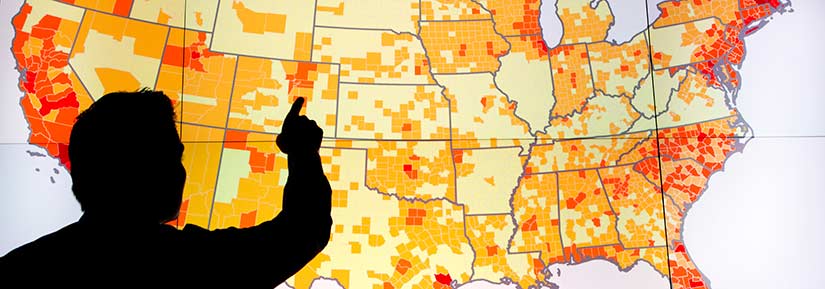NREL Unveils Open-Source Distributed Generation Market Demand Model
Distributed Generation Market Demand (dGen™) Model Is Publicly Available for the First Time

After years of development, the National Renewable Energy Laboratory (NREL) has released the open-source dGen model, marking a new era since the model launched in 2016. Public users can access model methodology and instructions, run the code, and receive technical support from the dGen team.
dGen simulates customer decisions about adopting and using solar, wind, and storage technologies for residential and commercial entities in the United States through 2050. This simulation helps utility companies and other stakeholders plan for increasing adoption of distributed energy resources (DERs) to understand how much electricity will be needed from the rest of the power system.
“The dGen model helps users to understand demand for distributed energy resources and, in turn, understand bigger, long-term questions like the role of DERs in a flexible, clean power system,” said Ben Sigrin, chief dGen scientist at NREL.
Key Features
dGen includes spatially resolved data that factors in spatial and socioeconomic considerations specific to the designated geographic area. This allows the user to identify clusters where more DER adoption will or will not likely take place, and which areas make the most economic sense. All data embedded in the model include this spatial layer.
Another key feature of dGen is a bottoms-up, agent-based modeling approach. By starting at the bottom, or the most detailed level, the model forecasts up, rather than looking at the entire industry and forecasting down.
In addition, customers are represented as agents, or independent decision-making entities, based on real data of U.S. household and commercial DER adoption. Agents individually assess a user-specified situation and make decisions based on a set of rules determined by the area they represent.
The agent-based approach allows for much more sophisticated forecasting than traditional mathematical methods. The dGen model can explore complex behaviors and more accurately reflect dynamics of decision-making about DERs. It can also show sensitivity to market and policy changes like retail electricity rate structures, net energy metering, and technology costs.
“When we use a bottoms-up, agent-based modeling approach, the whole energy system becomes the sum of interactions between individual agents, and therefore a much more realistic simulation of what the future might look like,” Sigrin said.
Model Applications at NREL
The dGen model has many applications and has been used widely across NREL research programs in the past four years. One study used dGen to analyze rooftop solar technical potential for low-to-moderate income households in the United States.
Another study by the dGen team showed that the costs of systematically misforecasting rooftop solar capacity are high: Doing so over multiple successive planning cycles could increase the present value of utility system costs by up to $7 million per terawatt-hour (TWh) of electricity sales.
The model currently supports analysis for the Los Angeles 100% Renewable (LA100) study and the New York State Energy Research and Development Authority’s transition from net metering to Value Stack, which credits customers on their electric bill for adopting and using DERs.
Try the dGen Model & Scenario Viewer
With the open-source release, dGen is available outside of the lab for the first time, supporting NREL’s vision to make data and tools accessible to the larger energy community.
Users can download the model and run it on their own systems. This includes a database of pre-generated agents or consumers, scenario descriptions as spreadsheets and CSV files, and the model code.
In conjunction with this release, NREL has created a Model Scenario Viewer to easily visualize and explore recent detailed NREL results without running the model yourself. Scenario inputs and outputs can be downloaded to continue analysis from a desktop.
The dGen team is excited to share the model with the energy community and welcomes feedback for how to improve the tool. “We want to elevate ‘state-of-the-art’ to even higher levels by partnering with the energy community. Can more data be integrated? Should there be different functionalities? We trust our users and take their feedback very seriously," Sigrin said. "Together, we can continue to evolve the tool to be as useful as possible."
dGen is supported by the Wind Energy Technologies Office and Solar Energy Technologies Office within the U.S. Department of Energy’s Office of Energy Efficiency and Renewable Energy.
Access more of NREL’s free data and tools for energy analysis research.
Join a webinar from 9:30 a.m. to 11 a.m. MDT on Thursday, Oct. 29, to see a live demonstration of how to use the open-source model and ask questions to the dGen team. Please register to attend.
Last Updated May 28, 2025
